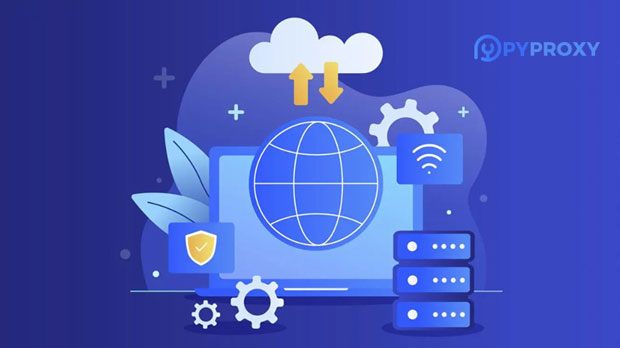socks5 proxies have become an essential tool for internet users looking to maintain privacy, secure their connections, and access content from different regions. The SOCKS5 protocol is a more advanced version of SOCKS (Socket Secure) that provides faster speeds and enhanced performance compared to its predecessors. By acting as an intermediary between the client and the destination server, a socks5 proxy routes internet traffic through a secure channel, ensuring that users can remain anonymous and bypass geographical restrictions. Understanding how high-speed SOCKS5 proxies work requires an exploration of their fundamental components, the technology behind them, and their advantages in enhancing internet activities. What is a SOCKS5 Proxy?At its core, a SOCKS5 proxy is a protocol that facilitates the transmission of data between a client (e.g., a user's computer) and a server, bypassing the direct connection. The SOCKS protocol, which stands for "Socket Secure," was initially created to handle traffic for internet services such as FTP, HTTP, and others, while providing some level of security and privacy. SOCKS5, the latest iteration of the protocol, offers improvements that contribute to higher speeds, flexibility, and security.While most proxy types, like HTTP proxies, focus on specific protocols (e.g., HTTP), SOCKS5 is more versatile. It can handle any kind of internet traffic, including HTTP, FTP, and even peer-to-peer (P2P) traffic. It also supports a variety of authentication methods, allowing users to choose how to verify their identity before accessing the proxy server.How Does a High-Speed SOCKS5 Proxy Work?Understanding the workflow of a high-speed SOCKS5 proxy involves a few key steps:1. Client Connection: A client (e.g., your computer or smartphone) connects to a socks5 proxy server. This server can be located in any region and will serve as an intermediary for all your internet requests.2. Request Authentication: Depending on the SOCKS5 configuration, the client might need to authenticate itself to ensure secure communication. This could involve providing a username and password or a cryptographic token to prove the client’s identity.3. Routing Traffic: Once the connection is established and authenticated, the SOCKS5 proxy routes the client’s internet traffic through its own servers. This means that the target websites or services will see the proxy server’s IP address instead of the client’s original IP address. The proxy server forwards the request to the destination server, retrieves the response, and sends it back to the client.4. Data Transmission: Unlike traditional proxies that only support specific types of traffic, a SOCKS5 proxy can transmit any kind of data, from simple web browsing requests to large file transfers. The protocol does not modify the content or nature of the data being sent, making it an ideal choice for high-speed, seamless connections.5. Maintaining Anonymity and Security: By routing the traffic through the proxy, the SOCKS5 protocol helps obscure the client’s identity and location, ensuring anonymity and privacy. Additionally, SOCKS5 supports secure communication protocols like TCP and UDP, which are critical for maintaining high-speed and stable connections.Key Features and Benefits of High-Speed SOCKS5 ProxiesThe high-speed capabilities of SOCKS5 proxies are due to several factors that distinguish them from other types of proxies:1. Increased Speed and Efficiency: Unlike older versions like SOCKS4, SOCKS5 does not require complex data processing or overhead for handling connections, which results in faster transmission speeds. Moreover, SOCKS5’s handling of UDP traffic ensures that real-time data (such as gaming or video streaming) can be transferred with minimal delay.2. Flexibility: SOCKS5 proxies are versatile and can support a wide range of applications. From web browsing to online gaming and torrenting, SOCKS5 can handle any kind of internet traffic without restrictions. This makes it highly suitable for users who need a proxy for multiple use cases.3. Support for Authentication: One of the main advantages of SOCKS5 is its support for multiple authentication methods. This feature allows users to ensure secure connections by verifying their identity with usernames and passwords or other authentication schemes, offering a layer of protection against unauthorized access.4. Bypass Geo-restrictions: By connecting to a SOCKS5 proxy server located in a different region, users can easily bypass geographical restrictions imposed by websites, services, or governments. This makes SOCKS5 an excellent tool for accessing restricted content, such as streaming services, in specific locations.5. Improved Privacy and Anonymity: SOCKS5 proxies are especially useful for users concerned with privacy. By masking the user’s original IP address and routing traffic through a proxy server, they can hide their online activities, making it difficult for third parties to track them.Differences Between SOCKS5 and Other Proxy TypesTo better appreciate the advantages of high-speed SOCKS5 proxies, it is essential to compare them with other commonly used proxies, such as HTTP and HTTPS proxies.- HTTP Proxy: An HTTP proxy works exclusively with HTTP traffic. This means that it can only route web traffic and cannot support other protocols like FTP or P2P. In contrast, SOCKS5 can handle a variety of internet traffic, making it a more flexible choice.- HTTPS Proxy: HTTPS proxies provide encryption for secure browsing. While they are useful for protecting sensitive information, they are often slower than SOCKS5 proxies because they add an additional layer of encryption and decryption. SOCKS5, on the other hand, is designed for speed, making it more suitable for users who prioritize performance over encryption.- SOCKS4 Proxy: SOCKS4 is the predecessor of SOCKS5 and does not support authentication methods, IPv6, or UDP traffic. SOCKS5’s support for these features makes it more versatile, secure, and faster, particularly for users who need high-speed connections for activities like gaming or file sharing.Practical Applications of High-Speed SOCKS5 ProxiesHigh-speed SOCKS5 proxies are used in various practical scenarios, including:1. Online Privacy: Individuals who value online privacy use SOCKS5 proxies to hide their IP address, ensuring that their internet activity cannot be easily traced back to them.2. Bypassing Censorship and Geo-blocking: Many users in countries with strict censorship use SOCKS5 proxies to access blocked websites or services. Additionally, content streaming services like Netflix or Hulu may be region-restricted, but by using a SOCKS5 proxy located in an allowed region, users can bypass these restrictions.3. Safe Online Shopping and Banking: SOCKS5 proxies are also beneficial for secure online shopping and banking. By masking their real IP addresses, users reduce the risk of their data being intercepted during transactions.4. Faster Gaming Experience: Gamers often use SOCKS5 proxies to reduce latency and improve connection speed while playing online games, especially in regions where internet infrastructure may not be optimal for gaming.5. Torrenting and File Sharing: SOCKS5 proxies are a popular choice for torrenting due to their ability to handle large volumes of data without slowing down the connection, ensuring faster download and upload speeds.ConclusionHigh-speed SOCKS5 proxies are an excellent tool for enhancing internet security, privacy, and performance. Their ability to handle a variety of internet traffic types, support authentication methods, and offer faster speeds than other proxy protocols makes them ideal for a wide range of applications. Whether it's bypassing geographical restrictions, improving online privacy, or optimizing gaming experiences, SOCKS5 proxies are versatile and reliable tools for users seeking a high-performance internet connection. As internet privacy concerns grow, the importance of understanding and utilizing high-speed SOCKS5 proxies continues to increase, offering a practical solution for a safer, faster, and more flexible online experience.
Jan 08, 2025
![arrow]()


















































